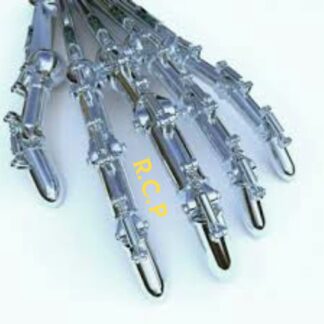Description
Designed by our high tech team at Radio Control Products (RCP)
Humanoid Arm vs. Bionic Arm: Understanding the Differences
Both humanoid and bionic arms share some similarities, but their goals and purposes differ significantly. Let’s delve into the specifics:
Humanoid Arm:
-
- Function: Mimic the appearance and movement of a human arm, often used in robots or androids.
-
- Focus: Biomimetic design, replicating the natural structure and movement of human arms as closely as possible.
-
- Capabilities: Varies depending on the level of sophistication. Advanced humanoid arms can have multiple degrees of freedom (DOF) for movement, allowing for grasping, manipulating objects, and even performing intricate tasks.
-
- Applications: Research and development in robotics, human-robot interaction, entertainment (think movie robots and animatronics).
Bionic Arm:
-
- Function: Replace or restore functionality to a missing or impaired limb in humans.
-
- Focus: Functionality and integration with the human body. Bionic arms prioritize factors like control, sensory feedback, and compatibility with the user’s nervous system.
-
- Capabilities: Can range from simple prosthetics with limited movement to advanced models with multiple DOF, motorized joints, and even rudimentary sensory feedback.
-
- Applications: Restoring mobility and independence to amputees, improving quality of life for individuals with limb differences.
Key Differences:
-
- Purpose: Humanoid arms are for robots, while bionic arms are for humans.
-
- Focus: Humanoid arms prioritize appearance and mimicking human movement, while bionic arms prioritize functionality and integration with the human body.
-
- Capabilities: Humanoid arms can be more complex and have more DOF, but bionic arms need to be more intuitive and controllable for the user.
-
- Applications: Humanoid arms are used in research and development, while bionic arms are used in medical and assistive technologies.
Additional Notes:
-
- The field of both humanoid and bionic arms is rapidly advancing. New technologies and materials are constantly being developed, leading to more sophisticated and functional limbs.
- The lines between humanoid and bionic arms can sometimes blur. Some advanced bionic arms are starting to incorporate more human-like appearance and movement, while some humanoid arms are being designed with features that could potentially be used in medical applications.






Reviews
There are no reviews yet.